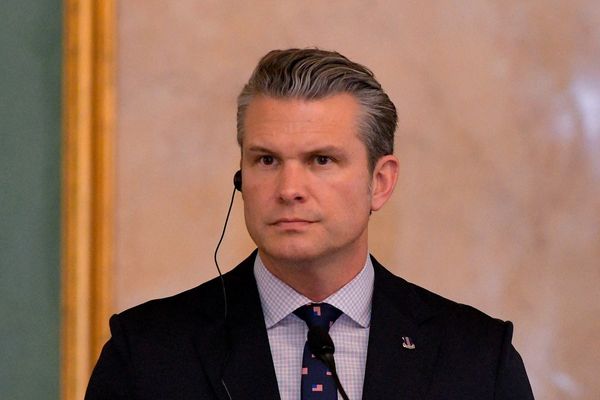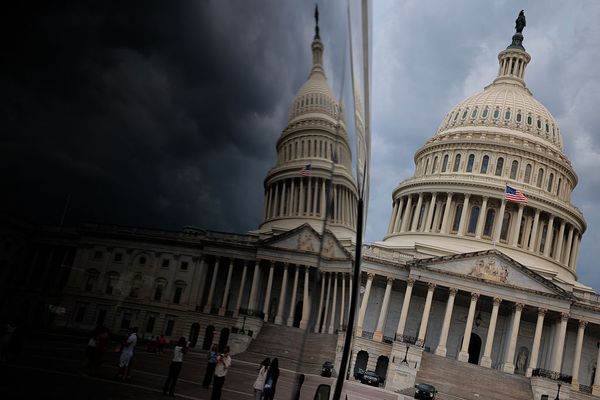As US and Chinese representatives prepare to meet in Switzerland in an effort to ease their escalating trade war, a potential sign of Beijing’s approach has emerged in an opinion piece published in the state-owned journal Beijing Daily.
Articles in the publication are often seen as a reflection of Beijing’s official stance. The latest piece – Today, it is necessary to revisit On Protracted War – argues that the trade war is an American attempt to strangle China’s economic growth and that it is necessary to perceive the current trade tensions as a long-term development.
What’s particularly important here is that the title refers to former Chinese leader Mao Zedong’s 1938 essay On Protracted War, a piece of writing that set out Mao’s approach to combating the invading Japanese during the second Sino-Japanese war between 1937 and 1945.
This strategy was also key to the subsequent establishment of the People’s Republic of China in 1949, after the communist victory in the long-running Chinese civil war. Mao became the chairman of the Chinese Communist party from 1943 until his death in 1976 and created a set of political theories referred to as Maoism. He wrote extensively on political strategy.
Get your news from actual experts, straight to your inbox. Sign up to our daily newsletter to receive all The Conversation UK’s latest coverage of news and research, from politics and business to the arts and sciences. Join The Conversation for free today.
Chinese policymakers and media figures often invoke the nation’s history to justify domestic and foreign policy. And the decision to reference Mao’s text reflects not only China’s strategy in the current trade war but also the lasting influence of his ideas.
Mao’s 1938 essay described a struggle that might seem, at first glance, a world away from the current China/US tariff conflict. His key thesis was that guerrilla warfare was a long-term affair with little chance for a quick victory.
Mao’s argument was that a war of attrition would end with a Chinese victory as it would slowly bleed the conventionally stronger Japanese forces of resources.
Such an approach has been a key feature of insurgencies throughout the modern world, with movements such as the Taliban in Afghanistan using the long war of attrition against larger or more technologically advanced foes.
By invoking On Protracted War, it would appear that Beijing perceives its economic struggles with the US as a conflict without a swift resolution, something that may come as a shock to Donald Trump who is clearly signalling that he now wants a deal.
This long view approach has also been reflected in how Beijing has been preparing for a second Trump trade war ever since its experiences in the first Trump presidency.
In contrast to China, the US administration appears to have banked on the trade war being a comparatively brief affair that should be ended by a quick and decisive knock-out blow against Beijing. And a public relations coup for Trump. This explains the showmanship behind the “liberation day” announcements, and the speed at which Washington deployed its key moves.
But by preparing its citizens for a protracted trade war, it would appear that China’s strategy, similarly to Mao’s, is to slow down the process and grind out the best deal it can over time.
Beijing believes that Chinese consumers are more capable of “eating bitterness” (coping with hardship) than Americans. So US diplomats would be well advised to dip into On Protracted War to understand more of China’s president Xi Jinping’s intentions.
Mao’s long shadow
However, this is not the only way in which Mao’s strategies are relevant to global politics right now.
Another of Mao’s political ideas was what he termed the “people’s war”. This envisioned a slow movement where one group creates “shadow institutions” that gradually displace established ones in order to build support from the local population.
This echoes part of China’s approach to globalisation, where China has supported, or created, alternatives to US-led institutions.
Many of Beijing’s international institutions, such as the Asian Infrastructure Investment Bank, Shanghai Cooperation Organisation and the belt and the road initiative are created to be alternatives to more established international bodies, such as the IMF and the World Bank. These Beijing felt were too dominated by the US.
While China has worked on this policy for decades, it seems to chime with Trump’s lack of commitment to US involvement in international institutions, such as the IMF and Nato. In this aspect of international politics, Xi and Trump seem to have somewhat similar goals, and could open up more space for Chinese leadership of these institutions.
It’s becoming clear that the Trump administration has severely miscalculated by assuming that Beijing would quickly capitulate, showing a lack of understanding of Chinese culture and political history. The expected instant deal has failed to materialise, and US stores are now warning that shelves may soon be empty of many goods.
The trade war has become a war of attrition, and whatever moves Xi makes now are likely to be only his first in what he sees as a very long game, in the great Maoist tradition.
Tom Harper does not work for, consult, own shares in or receive funding from any company or organisation that would benefit from this article, and has disclosed no relevant affiliations beyond their academic appointment.
This article was originally published on The Conversation. Read the original article.







